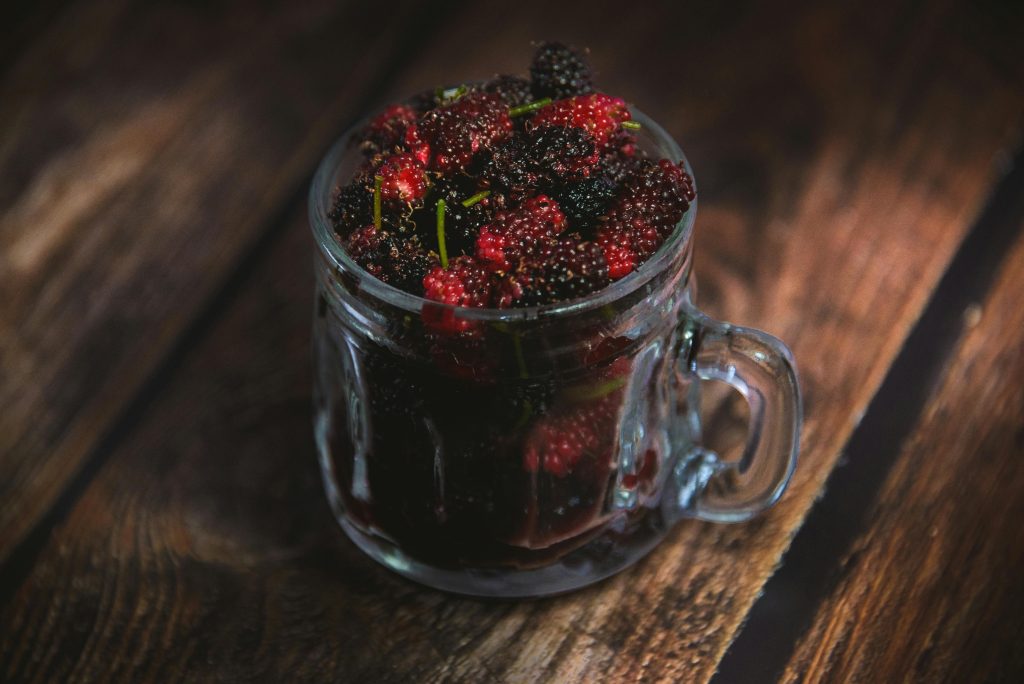
Wine made from grapes? Classic. But what about wine made from cherries, apples, or even bananas? Sounds wild, right? Well, brace yourself because fruit wine (yes, made from fruits other than grapes) is a delicious and adventurous world worth exploring. Let’s look into the fascinating and juicy topic of non-grape wines and discover how they compare to our beloved grape-based varieties.
The Basics: What is Wine?
First, let’s talk wine—what makes it wine? At its core, wine is an alcoholic beverage created by fermenting sugars found in fruits (usually grapes) with yeast. This process converts the sugars into alcohol. But here’s the kicker: grapes aren’t the only fruit that can be fermented into wine! Pretty much any fruit with natural sugars can be transformed into this delightful drink. Think apples, pears, cherries, and more.
Grapes became the gold standard due to their perfect balance of sugar, acid, and tannins, making them ideal for winemaking. But when it comes to flavor, variety is the spice of life, and non-grape wines bring some exciting new options to the table. Now, let’s discover what these fruity friends have to offer.

The Big Players: Common Non-Grape Fruit Wines
1. Apple Wine: The Crisp and Refreshing Rebel
Move over, cider! Apple wine is stepping up to the plate. Apple wine is made by fermenting apples, just like cider, but it usually has a higher alcohol content. It’s crisp, clean, and sometimes dry, with a tangy finish that’s perfect for summer sipping.
Apple wines are particularly popular in regions with cooler climates, like the northeastern United States and parts of Europe, where apple orchards are abundant. Want something a little spicier? Apple wine can be mulled, turning it into a warm, comforting winter drink. It’s the ultimate versatile fruit wine!
2. Cherry Wine: Sweet and Tart with a Punch
Cherry wine, also known as “the dessert wine’s fruity cousin,” is all about bold flavors. Made primarily from sour cherries (like Montmorency), this wine can range from sweet to tart. It often boasts a deep ruby color and is packed with intense fruitiness that pairs wonderfully with desserts like chocolate cake or fruit tarts.
Cherry wine is particularly popular in regions like Michigan in the U.S. and some parts of Europe where cherries are plentiful. Its intense flavors also make it a perfect candidate for blending, giving traditional red wines a fun, fruity twist.
3. Plum Wine: Japan’s Favorite Sip
Plum wine, also known as “umeshu” in Japan, is made from Japanese plums (ume) steeped in sugar and alcohol. It’s sweet, syrupy, and completely unique. While many associate it with Asian cuisine, plum wine can be enjoyed on its own, over ice, or even as part of a cocktail. It’s not fermented like typical wine but is instead created by soaking plums in a distilled spirit—still, it’s widely recognized as a wine.
Japan isn’t the only place that loves plums. Other parts of the world make delicious fermented plum wines that are dry, sweet, or somewhere in between.
4. Berry Wines: Raspberries, Blackberries, and Blueberries—Oh My!
Berries make for some of the most exciting fruit wines out there. Raspberry wine is a delightful blend of sweet and tart, offering bright berry flavors with a hint of acidity. It’s often light, perfect for summer, and pairs excellently with cheesecake or a creamy dessert.
Blackberry wine, on the other hand, tends to be bolder and richer. It’s jammy, packed with dark fruit flavors, and sometimes slightly tannic, making it a fun alternative to traditional red wines. And blueberry wine? Imagine a walk through a sun-kissed blueberry field—that’s what it tastes like. It’s often slightly sweet with a smooth finish, perfect for relaxing after a long day.

The Oddballs: Exotic and Unusual Fruit Wines
Let’s get exotic. While apple, berry, and plum wines are well-known, there are other, more unusual fruit wines out there that deserve a mention.
1. Banana Wine: Tropical Sweetness
Yes, you read that right. Bananas can be turned into wine! Banana wine is particularly popular in parts of Africa and the Caribbean, where bananas grow in abundance. It’s typically sweet, with a rich, fruity flavor and tropical notes. While it might sound strange, banana wine can be surprisingly refreshing, especially when served chilled.
2. Pineapple Wine: A Taste of the Tropics
Pineapple wine is another tropical delight. It’s made by fermenting the naturally sweet and tart juice of pineapples. Popular in places like Hawaii and the Philippines, this wine often has a bright, tangy flavor with a slight fizz. It’s a fantastic choice for those who love their wines a bit on the sweet side and pairs perfectly with seafood or a light salad.
3. Dandelion Wine: The Floral Underdog
Technically, dandelion wine isn’t made from fruit but rather from the bright yellow petals of dandelions. It’s an old-fashioned wine, made by fermenting dandelion flowers with sugar, water, and sometimes citrus fruits. The result? A light, floral, and slightly herbal wine that’s often enjoyed as a springtime treat. Dandelion wine is part of many folk traditions and has been celebrated in literature as well.
How Do Non-Grape Fruit Wines Compare to Traditional Grape Wine?
If you’re wondering how wine from fruits stack up against their grape counterparts, the answer lies in personal preference. Non-grape wines tend to be sweeter or fruitier and often have a lower alcohol content. That’s because many fruits naturally have less sugar than grapes, which can affect both the alcohol levels and the overall body of the wine.
However, just like grape wine, non-grape fruit wines can range from sweet to dry and light to full-bodied. They also share the same versatility in terms of food pairings. A crisp apple wine can be a great substitute for a Sauvignon Blanc with a light seafood dish, while a rich blackberry wine can stand up to hearty meals like a bold red wine would.
Making Your Own Fruit Wine
Feeling adventurous? You can actually make your own fruit wine at home! The process is similar to making grape wine, but instead of grapes, you’re using your fruit of choice. Here’s a basic rundown:
- Pick Your Fruit: Whether it’s apples, cherries, berries, or even bananas, start with ripe, high-quality fruit.
- Add Sugar and Yeast: Since many fruits don’t have as much sugar as grapes, you’ll likely need to add sugar to your mixture. Then, introduce yeast to kickstart the fermentation.
- Let It Ferment: Fermentation can take anywhere from a few weeks to a few months, depending on the fruit and desired alcohol content.
- Rack It and Wait: Once the initial fermentation is done, transfer (or “rack”) the wine into a clean container to remove any sediment. Then, let it age and develop flavor over time.
Final Thoughts
The world of fruit wine is vast, diverse, and full of surprises. Whether you’re sipping a crisp apple wine on a sunny day or enjoying a glass of rich cherry wine by the fire, non-grape fruit wines offer an exciting alternative to traditional wines. So, next time you’re feeling adventurous, grab a bottle of blackberry wine, pineapple wine, or even banana wine—you might just discover your new favorite drink!